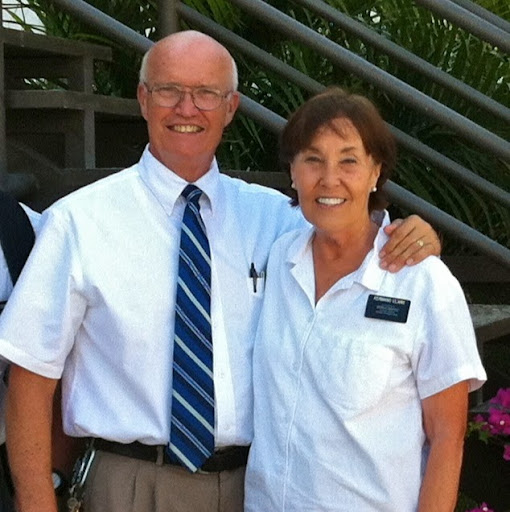Eugene R Clark
age ~72
from Bridgeport, CT
- Also known as:
-
- Gene Clark
- Eugen R Clarke
Eugene Clark Phones & Addresses
- Bridgeport, CT
- Allston, MA
- Lexington, MA
- Vienna, VA
- 235 Harvard Ave APT 2, Allston, MA 02134
Work
-
Company:Partners healthcare system, inc
-
Address:800 Boylston St Ste 1150, Boston, MA 02199
-
Phones:6172781000
-
Position:Senior software architect
-
Industries:Management Services
Education
-
Degree:High school graduate or higher
Specialities
Buyer's Agent • Listing Agent
Real Estate Brokers

Eugene Clark, Cambridge Highlands Cambridge Agent
view sourceWork:
C&M SIGNATURE PROPERTY GROUP
6173087918 (Phone)
6173087918 (Phone)
Interests:
Football - Basketball - Fishing - Fitness Training

Eugene Clark, Malden MA Agent
view sourceWork:
ERA
Malden, MA
7813243100 (Phone)
Malden, MA
7813243100 (Phone)
Isbn (Books And Publications)



The Secrets of Inchon: The Untold Story of the Most Daring Covert Mission of the Korean War
view sourceAuthor
Eugene Franklin Clark
ISBN #
0425190005

Name / Title
Company / Classification
Phones & Addresses
Senior Software Architect
Partners Healthcare System, Inc
Management Services
Management Services
800 Boylston St Ste 1150, Boston, MA 02199
Incorporator
CENTRAL CITY BANK OF CLARKSDALE
Chief Executive Officer, President
E & P Unified Services Inc
Meat Market
Meat Market
4717 Muskogee St, College Park, MD 20740
Wikipedia References

Eugene Clark (Actor)
Us Patents
-
Medical Laboratory Report Message Gateway
view source -
US Patent:7908293, Mar 15, 2011
-
Filed:Feb 14, 2008
-
Appl. No.:12/031492
-
Inventors:Samuel J. Aronson - Brookline MA, US
Lawrence J. Babb - North Grafton MA, US
Mollie Ullman-Cullere - Newtonville MA, US
Eugene H. Clark - Belmont MA, US -
Assignee:The General Hospital Corporation - Boston MA
-
International Classification:G06F 17/00
-
US Classification:707791, 707802, 707822, 707828
-
Abstract:A medical laboratory report communications gateway computer system is presented. The gateway is configured to receive medical laboratory reports from a plurality of clients. The gateway uses report form data stored in a database to perform an inbound translation on the medical laboratory report to transform the medical laboratory report to a canonical form. The gateway identifies a destination client for the medical laboratory report, and determines an outbound message form based on the destination client. The gateway performs the selected outbound translation on the medical laboratory report in the canonical form to transform the medical laboratory report in the canonical form into a form useable by the destination client. The gateway then transmits the translated medical laboratory report to the destination client.
-
Fine-Grained Authorization Framework
view source -
US Patent:20080256030, Oct 16, 2008
-
Filed:Apr 11, 2008
-
Appl. No.:12/101256
-
Inventors:Eugene Haskell Clark - Belmont MA, US
-
Assignee:MASSACHUSETTS GENERAL HOSPITAL - Boston MA
-
International Classification:H04L 9/32
G06F 17/30
G06F 12/12
G06F 12/08
G06F 15/16 -
US Classification:707 2, 726 2, 707103 R, 711135, 711216, 709203, 726 3, 707E17055, 711E12069, 711E12018
-
Abstract:A system and method for controlling access to an instance method on an instance-specific basis by intercepting an invocation of the instance method on an instance.
-
Medical Laboratory Report Message Gateway
view source -
US Patent:20110119309, May 19, 2011
-
Filed:Jan 21, 2011
-
Appl. No.:13/011650
-
Inventors:Samuel J. Aronson - Brookline MA, US
Lawrence J. Babb - North Grafton MA, US
Mollie Ullman-Cullere - Newtonville MA, US
Eugene H. Clark - Belmont MA, US -
International Classification:G06F 7/00
-
US Classification:707791, 707803, 707E17044, 707E17032
-
Abstract:A gateway enables medical (including genetic and genomic) laboratories and health care providers (collectively “clients”) to communicate electronic messages with each other without developing and maintaining an interface for each peer. The gateway translates messages sent between the parties. The gateway receives messages from each sender in a form, and containing diagnostic codes, preferred by the sender. For each received message, the gateway ascertains an intended receiving client. Each client may specify one or more receivers (such as applications) that are to receive messages sent to the client, as well as a separate form, and optionally a set of codes, for each receiver. For each receiver, the gateway generates translated messages, according to the receiver's preferred form and/or codes. The gateway sends the translated messages to each of the designated receivers. The gateway may include a validation component to cheek incoming messages to ensure the messages include required information and that information values are valid or acceptable. The gateway may include an exception handler that notifies a sending client if a message from the client fails to be translated or sent correctly. The gateway may maintain a repository in which the gateway stores copies of messages the gateway sent or would have sent to clients. The gateway provides an interface, such as a secure web interface, to this repository. Clients may access messages or lists of messages, especially messages the clients are not otherwise capable of receiving, through this interface. The gateway may store copies of some of the data that flows through the gateway in a bioinformatics database, which may be automatically analyzed by the gateway or queried for research or patient care purposes.
Lawyers & Attorneys

Eugene Clark - Lawyer
view sourceSpecialties:
Personal Injury
Civil Practice
Real Property
Probate
Civil Practice
Real Property
Probate
ISLN:
908366284
Admitted:
1978
University:
University of Kentucky, B.G.S., 1975
Law School:
Cumberland School of Law of Samford University, J.D., 1978

Eugene Clark - Lawyer
view sourceSpecialties:
Estate Planning
Business Organization
Real Estate
Business Organization
Real Estate
ISLN:
908366765
Admitted:
1948
University:
Harvard University, B.A., 1940
Law School:
Cornell University, LL.B., 1948

Eugene Clark - Lawyer
view sourceOffice:
Citigroup Global Markets Inc.
Specialties:
Employment Litigation and Advisory
ISLN:
908366758
Admitted:
1982
University:
City College of the City University of New York, B.A., 1979
Law School:
New York Law School, J.D., 1981

Eugene Clark
view source
Eugene Clark
view source
Eugene Clark
view source
Eugene Clark
view source
Eugene Clark
view source
Eugene Clark Alcantara
view source
Ralph Eugene Clark
view source
Roger Eugene Clark
view sourceGoogleplus

Eugene Clark
Lived:
Alexandria, VA
Work:
Department of energy - Federal PM
Education:
Georgia State University

Eugene Clark
Work:
Ghost - Consultant
About:
Debt Experts

Eugene Clark

Eugene Clark

Eugene Clark

Eugene Clark

Eugene Clark

Eugene Clark
Flickr
Youtube
Classmates

Eugene Clark
view sourceSchools:
Ellaville High School Ellaville GA 1973-1977
Community:
Larry Shiver, Evelyn Jones

Eugene Clark
view sourceSchools:
Oakville High School Oakville WA 1988-1992
Community:
Andrew Buhler, Circo Lynette, John Hendrick, Chuck Andersen

Eugene Clark
view sourceSchools:
Sleepy Hollow High School North Tarrytown NY 1960-1964
Community:
Medard Lizotte, Albert Butkovich

Eugene Clark
view sourceSchools:
Macon County High School Montezuma GA 1992-1996
Community:
Michael Martin, Shanthony Ways

Eugene Clark
view sourceSchools:
Montezuma High School Montezuma GA 1992-1996

Eugene Clark
view sourceSchools:
Brown Military Academy Pacific Beach CA 1939-1940
Community:
James Harpster, Bob Mccartney, A Terrell, Charles Hansen, Henry Morris

Eugene Clark (Loveland)
view sourceSchools:
Lake Geneva High School Lake Geneva WI 1943-1947
Community:
Clifford Richards, Rollie Rank, Deborah Mcculley

Eugene Clark
view sourceSchools:
Barryton High School Barryton MI 1938-1942
Community:
Marilyn Hart, Linda Smith
Get Report for Eugene R Clark from Bridgeport, CT, age ~72













